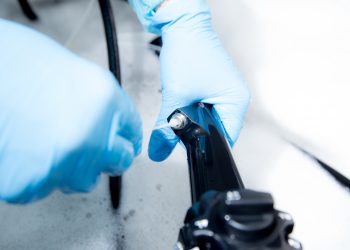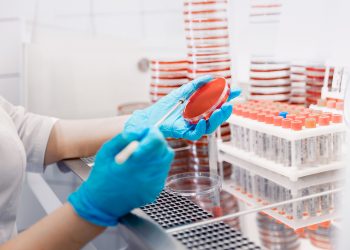No one has given me prior authorization to rail on prior authorization, but I’m going for it anyway. Oh, insurance companies, how I don’t love thee. Warning: in this letter I’m going to exhibit significant bias against insurance companies. If you’re into that, read on! However, if big insurance companies are your jam, you might want to skip this letter.
It’s not an understatement to say that I hate insurance companies. (My late father’s words are echoing in my ears now; I hear him saying, “Hate is a very strong word.” So let me weigh this memory before using the term … Okay, I weighed it and—sorry, Dad—I do indeed hate insurance companies). But there is no small irony in including my dad, since:
- I’m on a commercial flight (I’m headed to the Healthcare Sterile Processing Association conference) and my dad died on a commercial flight.
- If it weren’t for insurance companies being selfish cheapskates, my dad could very well still be alive.
In 2006, Dad died of a heart attack. He was 51. I was 25. The autopsy determined his problem would have been detected by a specific test that his insurance covers at age … 53. He had considered getting that test, but since he seemed to be in decent health, he didn’t want to incur the enormous out-of-pocket charge. Had he found out what was wrong he would have taken immediate and serious steps to reduce stress and eat even better. I know this to my very core. Another insurance irony here (and for me a tragedy, because it all led to losing Dad way too young) is that stress was a major contributor to his heart attack, and guess what his biggest stressor was? The fact that he was working two jobs because he needed insurance. He was in business for himself as a pressure washer, and he had a job on the side, driving for a nursing home.
My dad worked hard his entire life and lived frugally, yet the truth is impossible to ignore: He needed two jobs to secure insurance and make enough money to survive. We all know people in this position. Some of us may be in this position right now. And these days, people have it much harder than when Dad died in 2006, since the cost of living has gone up exponentially, while salaries haven’t kept pace. It sure isn’t getting any easier to be a middle-class person in the United States. One of the last things my dad ever said to me is, “The rich are gonna keep getting richer.” Boy, was he right.
The reason I initially chose this topic—before I got pretty damned sad and frustrated thinking about my dad—is that one of the many injustices of our modern national healthcare insurance cluster-mess is the concept of prior authorization. The American Medical Association released a great opinion article on this topic recently. It’s titled, “Don’t Fall for These Myths on Prior Authorization,” by Tanya Albert Henry. (See blue section below for article).
According to Henry, “Knowing the truth is important because prior authorization, a utilization-management tactic that in- surers once reserved for extremely expensive intervention, is now employed for even the simplest generic medication. And denials only seem to be becoming an even greater problem for physicians and patients’ health. A recent AMA survey shows that 61% of physicians fear payers’ unregulated use of AI tools will increase prior authorization denials. The payers’ automat- ed decision-making systems create systemic batch denials with little or no human review.”
I often wonder how big a headache the average endoscopy facility staff considers insurance to be. What’s your facility’s relationship with insurers? I imagine it’s not a one-size-fits-all situation—indeed, some insurers must be worse than others in what they’ll approve and in how they communicate. This is surely true of prior authorization as well.
Henry wrote, “Behemoth health insurers claim this time-wast- ing practice improves care and saves everyone money. Look beyond the myths and find out the facts. …Patients and phy- sicians beg to differ with the claims that insurers bandy about when discussing payers’ time-wasting, care-delaying tactics that are designed to control costs. And physicians have the research to back up their position.” AMA leaders aren’t sitting around complaining like I am; they’re taking action.
AMA is challenging insurance companies to eliminate care delays, reduce patient harm and decrease inconvenience to practices. “That includes setting the record straight on what the research shows about how prior authorization is used and how it affects American healthcare,” Henry wrote. A large section of her article is printed below, wherein Henry does a great job comparing fact and fiction with it comes to prior authorization.
Myth: Prior authorization lowers cost
Prior authorization, in fact, does not lower costs. Drug prior authorization costs $93.3 billion annually, according to a study published in Health Affairs. No one is immune. The study estimates that prior authorization costs payers
$6 billion, manufacturers $24.8 billion, physicians $26.7 billion and patients $35.8 billion annually.
Meanwhile, 88% of physicians surveyed by the AMA reported that prior authorization leads to higher healthcare utilization because of avoidable emergency department visits and patients being forced by payer policies to initially use ineffective treatments.
Fact: It’s expensive for doctors—and payers
Here’s what some researchers have discovered about how prior authorization translates in economic terms for physicians and payers.
For primary care physicians, prior authorization costs an individual doctor between $2,161 and $3,430 annually, according to a study published in the Journal of the American Board of Family Medicine.
At 11 dermatology clinics that researchers examined, completing a prior authorization for biologic drugs cost an average $15.80 per request—or about $3,454.15 for the month studied, according to research published in JAMA Dermatology.
Emergency visits and hospitalizations rose 1.7 percentage points when access to antidepressants was restricted, according to research published in Forum for Health Economics and Policy.
Formulary restrictions on antipsychotics increased hospitalization risk, inpatient costs and total medical costs, according to a study of 24 state Medicaid programs published in the American Journal of Managed Care. Restrictions increased the number of incarcerated people by 9,920 and upped the costs associated with incarceration by $362 million nationwide
Meanwhile, if a “gold carding” program—a system that allows approved physicians to forgo prior authorizations for certain medications or procedures—were implement- ed, it would save 5%–10% for payers and physicians, a McKinsey & Co. analysis found.
Fact: Prior authorization is wasteful
The AMA’s most recent annual survey of 1,000 physicians about prior authorization found that practices on average complete 39 prior authorization requests per physician, per week.
The AMA survey (PDF) also found that:
- Physicians and their staff spend an average of 13 hours completing those requests each week.
- 40% of physicians have staff who work exclusively on prior authorizations.
After jumping through all of those hoops, 98.5% of prior authorizations in pediatric oncology and hematology were eventually approved, according to a study in the Pediatric Blood & Cancer journal. Similarly, an AMA-funded cohort study published in Arthritis Care & Research found that 96% of all prior authorizations on rheumatoid disease treatments were ultimately approved.
Myth: Prior authorization improves care
The opposite is true. Prior authorization worsens patient outcomes.
Insurance companies’ overuse of prior authorization causes patients real harm — in some instances even resulting in death. Nearly 30% of the physicians who participated in the AMA prior authorization survey reported that the practice has led to a serious adverse event for a patient in their care, including 8% that said prior authorization led to a patient’s disability or permanent bodily damage, congenital anomaly or birth defect or death.
Fact: It delays necessary care
In addition to the agonizing anecdotes that every physician has, numerous peer-reviewed studies back up the fact that prior authorization results in patients not getting necessary care as quickly as they should be getting it. Here are a few examples.
Reduced access to novel anticoagulants because of prior authorization and step therapy led to higher risk for mortality, stroke and transient ischemic attack, according to research published in The American Journal of Managed Care.
In an American Society for Radiation Oncology survey, 31% of radiation oncologists said that prior authorization had delayed a patient’s treatment by one week, alarming because other research has shown an association of “each week delay in starting cancer treatment with a 1.2% to 3.2% increased risk of death.”
Dermatology patients with approved prior authorization requests had a 71.1% likelihood of disease improvement; those who had requests denied had a 58% likelihood of improvement, says a study published in the Journal of the American Academy of Dermatology.
Fact: It blocks evidence-based care
Physicians spend many years in medical school, residency and fellowship training and continuing medical education to gain the knowledge and skills needed to provide the best care for patients.
Yet prior authorization decisions are frequently made by those who do not share those qualifications. When physicians have “peer-to-peer consults,” the person on the other end of the line may be a nurse or a physician in a completely different specialty with little to no knowledge of the disease or treatment in question.
In addition, research has shown that prior authorization has led to:
- A nine-times increased likelihood that irritable bowel disorder patients will need surgery when medication has been denied through prior authorization, says a study published in the journal Inflammatory Bowel Diseases
- Over 40% of commercial patients and 53% of Medicare patients not beginning the oncology treatment their physician prescribed after a prior authorization denial or step therapy requirement, according to a white paper published by IQVIA
- Limited access to pre-exposure prophylaxis (PrEP) and increased rates of HIV diagnosis in regions with high rates of prior authorization for PrEP, which protects against contracting HIV, according to a JAMA Network Open study
If you’d like to learn more about what healthcare teams and patients can do to help reform efforts, or if you’d like to share personal experiences with prior authorization, contact FixPriorAuth.org. I’m going to take part in the reform, in honor of my dad. I’m still typing on a plane like I was at the beginning of this letter, and I’m still thinking of Mark Beaver in a way that, if I delve deeper, will make me cry. He took his final breaths in an airplane cabin just like I’m in right now. I’ve always wondered if I’d ever meet someone who was on that flight from Albany, New York to Sarasota, Florida. Who knows—maybe one of you were on that flight or knew someone who was. The plane emergency-landed in North Carolina, but it was too late. Dad left the plane in a body bag.
That’s not a flight anyone on board would ever forget, and I’ll never forget that had it not been for the penny-pinching, wildly rich misers at insurance companies, my father probably would have lived a lot longer. I can never condone that Luigi Mangione killed UnitedHealthcare CEO Brian Thompson—the murder was wrong; it was sick and cruel— but I can understand the rage he felt, and I suspect many of you may understand that rage as well. I’d love to ask my dad his thoughts on all this, but I can’t. He’s gone. And so, I’ll ask you, as a healthcare professional whose practice deals with insurance, for your thoughts instead. Please feel free to email me at [email protected].
Note: As we go to press the last week in May, 2025, our senior editor is still trying to get an urgent medication prescribed in late April by her doctor. Her insurance company kicked it back for—you guessed it—prior authorization.
Author
-

Michelle has worked as a journalist, editor in chief and communications professional for more than 20 years with 12 years specializing in healthcare, including as editor in chief for the EndoNurse media brand. She’s the editor, ghost author and co-author of several books.
View all posts
































